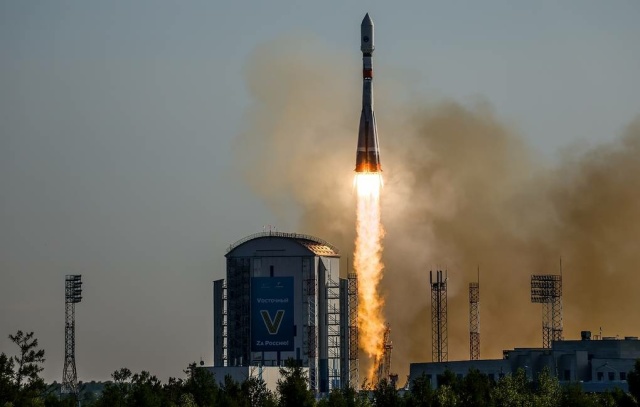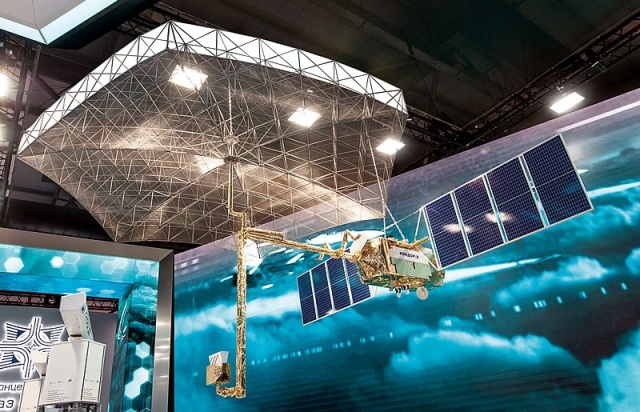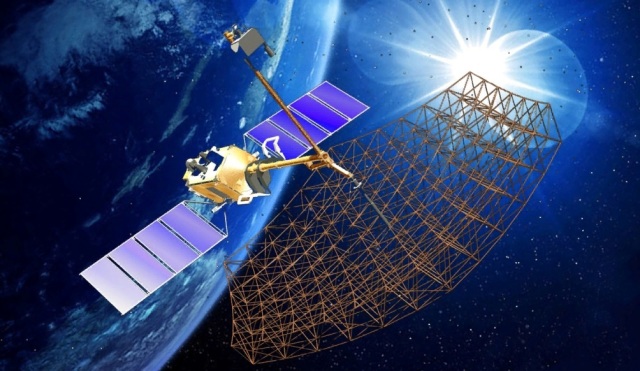According to the State Corporation Roscosmos, on May 27, 2023 at 00:14:51 Moscow time, a Soyuz-2.1a carrier rocket with a Fregat upper stage was launched from the 1C site of the Vostochny Cosmodrome, which launched the Condor-FKA No. 1 radar remote sensing satellite into orbit. The launch vehicle worked in normal mode, the upper stage separated from the third stage of the rocket and brought the spacecraft into a predetermined orbit.

Launch from the Vostochny cosmodrome of the Soyuz-2.1a carrier rocket with the Fregat upper stage, which launched the Condor-FKA remote sensing radar satellite No. 1 into orbit, 05/27/2023 (c) TASSThis was the eighth launch of a Russian launch vehicle in 2023, including the first from the Vostochny cosmodrome.
For Soyuz-2.1a, this flight was the 61st, for the Frigate family - the 114th in history.
The Soyuz-2 launch vehicle.1a" was manufactured by the Progress Rocket and Space Center, the Fregat upper stage was manufactured by the Lavochkin Scientific and Production Association (part of Roscosmos), the satellite was manufactured by JSC Military Industrial Corporation Scientific and Production Association of Mechanical Engineering.
The Condor-FKA spacecraft is designed for round-the-clock all-weather radar remote sensing of the Earth in medium and high resolutions. The launch of the second satellite is scheduled for 2024, and two more by 2029-2030.
According to official data from Roscosmos, the Condor-FKA space system is designed to receive high- and medium-resolution radar information in order to solve the problems of socio-economic development of the Russian Federation and provides round-the-clock all-weather sounding of the Earth's surface.
With a full orbital grouping of two spacecraft, the Condor-FKA space system provides radar surveys of the Earth's surface in the latitude band from 85 ° s.w. to 85 ° s.w. in detailed searchlight (DPR), detailed continuous (DNR) and survey (OR) modes with the possibility of implementing interferometric surveys in each of the specified modes, including:
- frame radar surveys of the Earth's surface with high-resolution images (DPR);
- band radar surveys of the Earth's surface with high-resolution images (DNR);
- band radar surveys of the Earth's surface with a wide capture band to obtain medium-resolution images (OR);
- filming with the accumulation of target information in a long-term onboard storage device and its subsequent transmission in the radio visibility zone of reception points;
- filming within the radio visibility zone of the information receiving point in the mode of quasi-indirect transmission of the received radar information;
- interferometric surveys of the earth's surface.
With a full orbital grouping of two spacecraft, the space system provides an average frequency of observation of an arbitrary object of the Earth's surface at latitude 30 ° for no more than 12-14 hours with a probability of 0.9 or no more than 24-26 hours with a probability of 0.9 while providing single-pass interferometric survey of objects with two spacecraft;
With a full orbital grouping of two spacecraft, the space system provides daily performance:
- at least 200 conditional frames of 10 km x 10 km, made in DPR with a resolution of 1-2 m or;
- at least 200,000 km2 made in the DPR with a resolution of 2-3 m or;
- at least 1,000,000 km2, made in OR with a resolution of 6-12 m.
From the bmpd side, we point out that the development of radar reconnaissance satellites initially for military purposes 14F133 "Condor" was carried out in the NPO Mashinostroenie (now JSC Military Industrial Corporation Scientific and Production Association of Mechanical Engineering as part of JSC Tactical Missile Armament Corporation) since 1992.
The launch into orbit in the interests of the Russian Ministry of Defense of the first device "Condor" ("Condor-202", "Cosmos-2487") was carried out on June 27, 2013 from Baikonur using a carrier rocket of the Strela light class (created in the NPO Mashinostroenie on the basis of the UR-100N UTTH intercontinental ballistic missile). The satellite was put into orbit 494 x 513 km. According to Western reports, although the device showed high quality of work, however, in 2014 the satellite failed due to the failure of its radar part. After that, there was no data on the resumption of this program in the interests of the Russian Ministry of Defense, although according to a number of reports, the NPO Mashinostroeniya had produced three samples of the Condor satellite by the time the first device was launched.
Another sample of the satellite under the 2006 contract was made for the Ministry of Defense of South Africa (according to some sources, it had the number 0004) and was launched under the designation "Condor-E" into the target orbit by the Strela rocket from the Baikonur cosmodrome on December 19, 2014. It was reported that the operation of the satellite in orbit since January 2015 was accompanied by technical problems.
According to Western data, the Condor satellite was equipped with an S-band radar (9.5 cm) with a parabolic antenna measuring 6 by 7 meters developed by the MEI Design Bureau. The satellite was supposed to receive images in two modes: in detailed mode (the viewing band is 10 by 10-20 km, the resolution is 1-2 meters) and panoramic mode (the viewing band is 20-160 km, the resolution is 5-20 m). The weight of the device is about 1150 kg, the data transfer rate is up to 350 Mbit/s.
In December 2014, Roscosmos summed up the results of an open competition on the creation of a space complex based on a spacecraft of the Condor-E type called Condor-FKA (FKA - Federal Space Agency), which was won by NPO Mashinostroeniya. The complex should include two Condor-FKA satellites. Officially, the main customers of satellite data should be the Ministry of Agriculture and the Ministry of Emergency Situations of Russia, however, apparently, the complex really has a dual purpose and should also be used in the interests of the Ministry of Defense of Russia.
Initially, the launch of both Condor-FKA devices was scheduled for 2018-2019, but as a result, the launch of the first device took place five years behind the plan. The service life of the satellites is five years, so in 2028-2029 they should be replaced in orbit by similar devices.
In March 2023, the representative of Roscosmos, Vitaly Mironichev, during a meeting with representatives of executive authorities on the specifics of the execution of applications for satellite imagery, said that the upgraded spacecraft Condor-FKA-M is currently in the development of design documentation, flight tests are planned for 2030.

Layout of the radar reconnaissance satellite "Condor-E" (c) JSC "Military Industrial Corporation "Scientific and Production Association of Mechanical Engineering" Image of the radar satellite for remote sensing of the Earth "Condor-FKA" (c) Roscosmos

